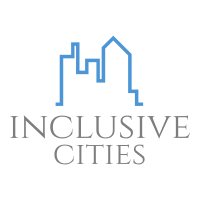Chapter 6: Past, present, future: using historical and social heritage for creating innovation
What is Cultural Heritage?
Cultural Heritage is an expression of the ways of living developed by a community and passed on from generation to generation, including customs, practices, places, objects, artistic expressions and values. Cultural Heritage is often expressed as either Intangible or Tangible Cultural Heritage (ICOMOS, 2002).
As part of human activity Cultural Heritage produces tangible representations of the value systems, beliefs, traditions and lifestyles. As an essential part of culture as a whole, Cultural Heritage, contains these visible and tangible traces form antiquity to the recent past.
Cultural Heritage is a wide concept. We prefer to concentrate on the similarities between the various heritage sectors, instead of on their differences.
Cultural Heritage Types
Cultural Heritage can be distinguished in:
- Built Environment (Buildings, Townscapes, Archaeological remains)
- Natural Environment (Rural landscapes, Coasts and shorelines, Agricultural heritage)
- Artefacts (Books & Documents, Objects, Pictures)
Driving force behind all definitions of Cultural Heritage is: it is a human creation intended to inform (John Feather, 2006).
Tangible & Intangible Heritage
Having at one time referred exclusively to the monumental remains of cultures, cultural heritage as a concept has gradually come to include new categories. Today, we find that heritage is not only manifested through tangible forms such as artefacts, buildings or landscapes but also through intangible forms. Intangible heritage includes voices, values, traditions, oral history. Popularly this is perceived through cuisine, clothing, forms of shelter, traditional skills and technologies, religious ceremonies, performing arts, storytelling. Today, we consider the tangible heritage inextricably bound up with the intangible heritage. In conservation projects we aim to preserve both the tangible as well as the intangible heritage.
Preserving culture and heritage through generations
Cultural heritage is the legacy of physical artefacts and intangible attributes of a group or society that are inherited from past generations, maintained in the present and bestowed for the benefit of future generations. Cultural heritage includes tangible culture (such as buildings, monuments, landscapes, books, works of art, and artefacts). It also includes intangible culture traditions or living expressions inherited from our ancestors and passed on to our descendants, such as oral traditions, performing arts, social practices, rituals, festive events, knowledge and practices concerning natüre and the universe or the knowledge and skills to produce traditional crafts intangible culture (such as folklore, traditions, language, and knowledge), and natural heritage (including culturally significant landscapes, and biodiversity). Whatever shape they take, these things form part of a heritage, and this heritage requires active effort on our part in order to safeguard it.
They may be significant due to their present or possible economic value, but also because they create a certain emotion within us, or because they make us feel as though we belong to something – a country, a tradition, a way of life.
The best way to preserve your cultural heritage, whatever it may be, is to share it with others. The importance of preserving heritage, tradition and race Cultural heritage and natural history of a nation has a very high value and is unique. It is an identity that can be introduced to the world.
Cultural heritage affirms our identity as a people because it creates a comprehensive framework for the preservation of cultural heritage including cultural sites, old buildings, monuments, shrines, and landmarks that have cultural significance and historical value. Culture and its heritage reflect and shape values, beliefs, and aspirations, thereby defining a people’s national identity. It is important to preserve our cultural heritage, because it keeps our integrity as a people.
The importance of intangible cultural heritage is not the cultural manifestation itself but rather the wealth of knowledge and skills that is transmitted through it from one generation to the next. The social and economic value of this transmission of knowledge is relevant for minority groups and for mainstream social groups within a State and is as important for developing States as for developed ones.

Preservation of the heritage, tradition and culture in culturally diverse societies
While fragile, intangible cultural heritage is an important factor in maintaining cultural diversity in the face of growing globalisation. An understanding of the intangible cultural heritage of different communities helps with intercultural dialogue and encourages mutual respect for other ways of life.
There is a risk that certain elements of intangible cultural heritage could die out or disappear without help, but how can we safeguard and manage a heritage that is constantly changing and part of ‘living culture’ without freezing or trivialising it? Safeguarding them is about the transferring of knowledge, skills and meaning. In other words, safeguarding focuses on the processes involved in transmitting, or communicating intangible cultural heritage from generation to generation, rather than on the production of its concrete manifestations, such as a dance performance, a song, a music instrument, or a craft.
Preservation of culture and heritage through education
The appreciation of cultural heritage should be communicated through an integrated education approach in this global society. Sustainability in the preservation of cultural heritage through education should be encouraged. It is a way of how tangible and intangible cultural heritage can be safeguarded.
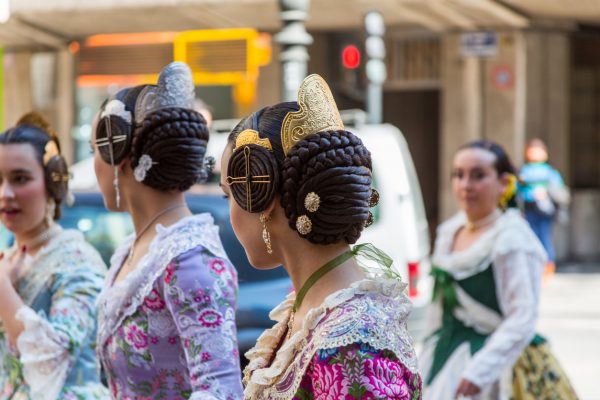
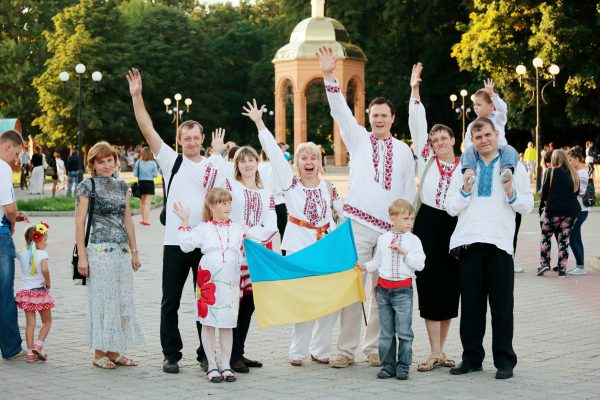
The Role of Media in Preserving Culture and Heritage
Digital storage has played a large role in the preservation of cultural heritage. It has enabled the sharing of cultural and historical heritage around the world. Digital storage is not only the most popular method of preservation, but it is the trend for the future.
People pursue artistic and creative expression through a variety of outlets: formal theatrical performances, sculptures, paintings, and buildings; as well as the less formal arts, music and food festivals, celebrations and informal cultural gatherings, pickup bands, and crafts groups.
Together, these formal and informal, tangible and intangible, professional and amateur artistic and cultural activities constitute a community’s cultural assets. These activities – which encompass a diverse set of locations, spaces, levels of professionalism and participation, products, events, consumers, creators, and critics – are essential to a community’s well-being, economic and cultural vitality, sense of identity, and heritage.
Protecting Culture and Heritage
To be kept alive, tangible cultural heritage must remain relevant to a culture and be regularly practised and learned within communities and between generations. Safeguarding measures to ensure that intangible cultural heritage can be transmitted from one generation to another are considerably different from those required for protecting tangible heritage (natural and cultural).
There is a risk that certain elements of intangible cultural heritage could die out or disappear without help, but safeguarding does not mean fixing or freezing intangible cultural heritage in some pure or primordial form. Safeguarding intangible cultural heritage is about the transferring of knowledge, skills and meaning.


Cultural Rights And Freedom
Cultural rights are human rights that aim at assuring the enjoyment of culture and its components in conditions of equality, human dignity and non-discrimination. They are rights related to themes such as language; cultural and artistic production; participation in cultural life; cultural heritage; intellectual property rights; author’s rights; minorities and access to culture, among others. All persons with a particular cultural, religious, racial or linguistic background must not be denied the right, in community with other persons of that background, to enjoy his or her culture, to declare and practise his or her religion and to use his or her language.
Historical cultural heritage sources are massive and are versatile life accumulations. Existing without any threats in the past, historical cultural heritages have been largely destroyed today and has faced with total destruction (Uygur & Baykan, 2007) . This historical cultural environment can be defined as images of reflections of cultural values created by people throughout history on physical environment (Keleş, 1997) . These images are witnesses of their periods and information sources that tell us about the characteristics of those periods. Since these historical cultural values contribute to humanity’s common pas, they must be places to be protected (Yasin, 2007) . The problem of protecting these values start from the local and goes up to global. Developed policies about preservation has been tried to be kept alive. Preservation of historical cultural heritage has gained importance in the last 20 years and not only new implementation types have been developed but also new concepts have been developed (Herbert, 1995) . In fact, there are international institutions and conventions developed to protect cultural artifacts in accordance with common principles of cultural heritage (Emekli, 2005) . UNESCO accepted these cultural elements as tangible cultural heritage with 1972 UNESCO Convention Concerning the Protection of the World Cultural and Natural Heritage (UNESCO, 1972) . On September 11, 1999, the European Union started “Europe a Common Heritage” campaign in a meeting held in Bucharest. The campaign’s purposes are increasing cultural, natural and historical heritage awareness in Europe, developing cooperation among countries while respecting cultural diversity and bringing moral, religious and cultural values related to protected cultural and historical sites into the forefront. Other world institutions, companies, associations and voluntary organizations support this campaign (UNESCO, 1999) . Protection of historical cultural heritage should be considered in the framework of sustainable development, pursuing the balance. For this purpose, Convention Concerning the Protection of the World Cultural and Natural Heritage is constantly being updated and other countries’ signatures are being campaigned. Signing the UNESCO Convention Concerning the Protection of the World Cultural and Natural Heritage in 1983, our country has been working on many studies under Directory General of Preservation of Natural Heritage (Emekli, 2005) .
What is Innovation?
The word “innovation” is derived from the Latin verb innovate, which means to renew. In essence, the word has retained its meaning up until today. Innovation means to improve or to replace something, for example, a process, a product, or a service. In the context of companies, however, the term needs a definition. In the complex context of business, a definition is needed.
innovation is the practical implementation of ideas that result in the introduction of new goods or services or improvement in offering goods or services. ISO TC 279 in the standard ISO 56000:2020 defines innovation as “a new or changed entity realising or redistributing value”. Others have different definitions; a common element in the definitions is a focus on newness, improvement, and spread of ideas or technologies. Innovation often takes place through the development of more-effective products, processes, services, technologies, art Works or business models that innovators make available to markets, governments and society. Innovation is related to, but not the same as, invention: innovation is more apt to involve the practical implementation of an invention (i.e. new / improved ability) to make a meaningful impact in a market or society, and not all innovations require a new invention.
Surveys of the literature on innovation have found a variety of definitions. In 2009, Baregheh et al. found around 60 definitions in different scientific papers, while a 2014 survey found over 40. Based on their survey, Baragheh et al. attempted to define a multidisciplinary definition and arrived at the following definition:
“Innovation is the multi-stage process whereby organizations transform ideas into new/improved products, service or processes, in order to advance, compete and differentiate themselves successfully in their marketplace”
In an industrial survey of how the software industry defined innovation, the following definition given by Crossan and Apaydin was considered to be the most complete, which builds on the Organisation for Economic Co-operation and Development (OECD) manual’s definition:
Innovation is production or adoption, assimilation, and exploitation of a value-added novelty in economic and social spheres; renewal and enlargement of products, services, and markets; development of new methods of production; and the establishment of new management systems. It is both a process and an outcome.
American sociologist Everett Rogers, defined it as follows:
An idea, practice, or object that is perceived as new by an individual or other unit of adoption
According to Alan Altshuler and Robert D. Behn, innovation includes original invention and creative use and defines innovation as a generation, admission and realization of new ideas, products, services and processes.
Two main dimensions of innovation are degree of novelty (i.e. whether an innovation is new to the firm, new to the market, new to the industry, or new to the world) and kind of innovation (i.e. whether it is process or product-service system innovation). In organizational scholarship, researchers have also distinguished innovation to be separate from creativity, by providing an updated definition of these two related constructs:
Workplace creativity concerns the cognitive and behavioral processes applied when attempting to generate novel ideas. Workplace innovation concerns the processes applied when attempting to implement new ideas. Specifically, innovation involves some combination of problem/opportunity identification, the introduction, adoption or modification of new ideas germane to organizational needs, the promotion of these ideas, and the practical implementation of these ideas.
Peter Drucker wrote:
Innovation is the specific function of entrepreneurship, whether in an existing business, a public service institution, or a new venture started by a lone individual in the family kitchen. It is the means by which the entrepreneur either creates new wealth-producing resources or endows existing resources with enhanced potential for creating wealth
The role of historical and cultural heritage in adult education
Adult education is concerned with the education of adults. The nations of who is an adult vary from ―those past school age through ―grownup to ―mature individuals‖ Precise identification of an adult tend to fall into the categories of age, psychological and social role. Adult education is a relationship between an education agent and learners in which the agent selects, arranges, and continuously directs a sequence of progressive tasks that provide systematic experiences to achieve learning from those whose participation in such activities is and supplemented to a primary productive role in society. Thus, only those systematically planned experiences intended to result in learning, and only that learning which occurs in a purposefully constructed instructional setting under the continuous direction of an external educational agent, fall within the scope of Adult education. One of the concepts of adult education given by Malcolm Knowles, who is the father of Adult Education, is fundamental education. The role of cultural practices and knowledge plays in the transferring and preservation of cultural heritage cannot be over emphasized. It is a veritable medium by which Black Africans transfer their cultural heritage from one generation to the other. Due to the flexibility of the medium of exchange of cultural heritage, it stands the risk of being lost or forgotten. This situation, therefore, made participation, preservation and conservation of cultural heritage a very important task to every individual in any community and most especially the adults in order to ascertain onward transfer of this cultural heritage to unborn generations.
Adult education is majorly created to transmit knowledge for individual and societal advancement to further development and liberation. According to (Thomas, 1991), who define adult education as a deliberate effort by which men and women attempt to satisfy their thirst for knowledge, to equip themselves for their responsibilities as a citizen and member of society.
Adult education platform is argued and emphasized to liberate with a focus on education for life and social change goals such as personal enlighten, active citizenship, and promotion of democratic and cultural heritage.
It could be concluded that adults education is capable of impacting knowledge and love for cultural heritage that would inspire adults to participate in preservation of their cultural heritage. Also, if learners are taught accurately in the right way that will make them fall in love with learning it will help them incur ways of preserving cultural heritage fast and easily. Lastly, adult participation in adult education would open their eyes to the importance of cultural heritage, how to preserve it and the need to preserve and maintain it.

Recommendations
- Facilitators of adult education should impact knowledge and love for cultural heritage in a way that would inspire adults to participate in preservation of their cultural heritage and to pass the knowledge to coming generations.
- Adults should pass the cultural heritage knowledge to their children accurately in the right way that will make them fall in love with learning and incurring ways of preserving their cultural heritage fast and easily.
- Government should encourage adult participation in adult education as it will open their eyes to the importance of cultural heritage, how to preserve it and the need to preserve and maintain it.
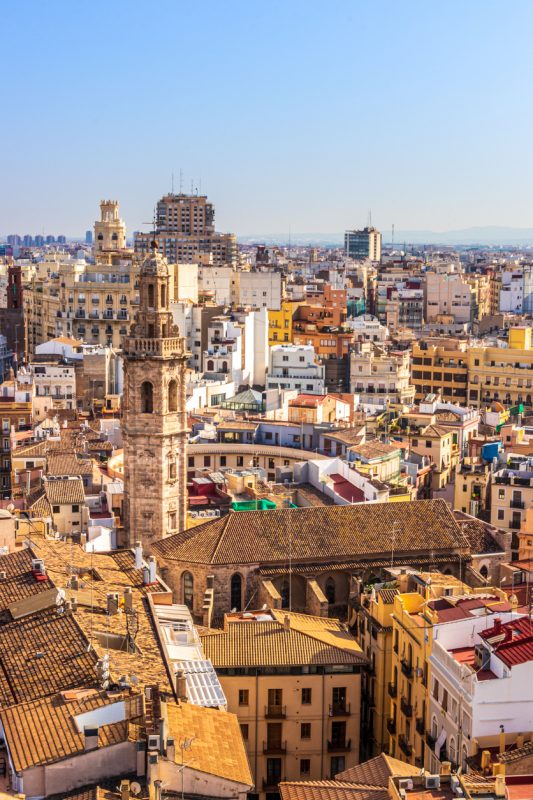
Heritage-led innovation
Heritage-led innovation builds on the implementation of a cutting-edge idea or method that results in an improvement for users. The basis of the innovation process is new knowledge, which is often an intersecting of disciplines and needs. The innovation is either tested by the practitioners and larger society, or is ready for a larger upscaling towards the market.
Considers three categories of heritage-led innovation, taking into account the diverse roles heritage can play in relation to innovation as well as its interaction with other sectors:
Heritage-driven innovation: innovations that are based on the specific needs of heritage assets (due to their unique values, materials, design techniques or characteristics) and also become also available for other sectors.
Assimilation of innovation: innovations developed in other fields or sectors that can be applied to heritage assets in order to generate knowledge, new uses, improvement of preservation, enhance decision-making or support their management.
Heritage as resource: Heritage at large or specific heritage assets generate new ideas or knowledge, are the basis for innovation processes or kick-start new interdisciplinary and cross-sectoral collaborations leading to innovation in various fields.

Heritage-led diplomacy
Heritage-led diplomacy and international cooperation build on the relevance of heritage and of shared past heritage to foster international cultural relations, peace building, reconciliation, social cohesion, multicultural dialogue, better mutual understanding, human and economic development across nations and communities.
Not only involving governmental actors at all levels (national, regional and local), heritage-led diplomacy also includes a broader array of non-state stakeholders such as people-to-people dialogue, cultural heritage organisations operating for instance in architectural preservation, social development or post-disaster reconstruction. Heritage-led diplomacy is therefore about multidimensional and multi-stakeholders’ cultural exchanges, beyond states and international bodies.
Heritage-driven diplomacy whereby heritage and its governance are put at the centre of diplomatic processes, recognising their broader political, social, cultural and economic impacts for bi and multilateral relations, transnational cooperation and reconciliation.
Heritage within diplomacy whereby the preservation of heritage acts as a political tool in state-led foreign policy or local initiatives, in the context of promoting better mutual understanding and exchanges or conflict resolution and recovery in developing countries.
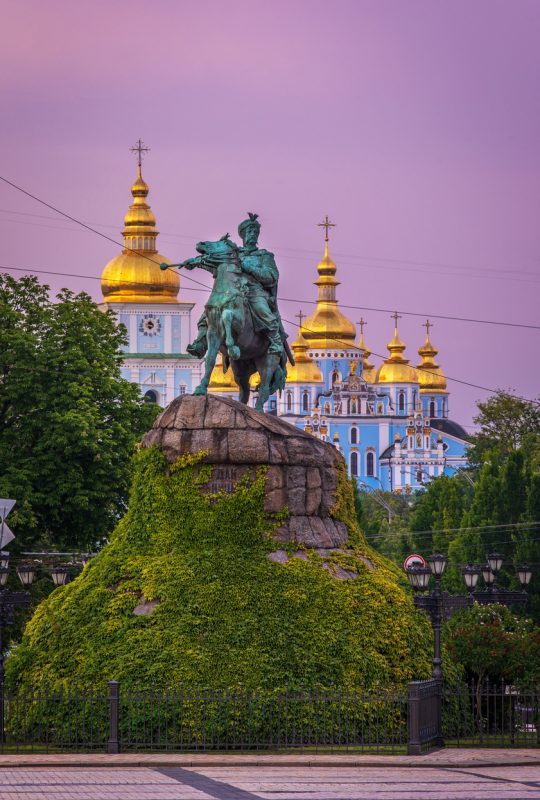
Innovation Ecosystems
What is the role of technology in the context of Cultural Heritage? How can the use of technology align with the objectives of cultural heritage visitors and institutions? Eventually, how can technology help improve the position of Cultural Heritage in the Digital Age? Across Europe, there are currently more than 19.000 museums and cultural venues. By 2016, one third of European museums had invested in some sort of digital transformation (EGMUS, 2016), creating a wealth of data, technologies and expertise. In the period 2007–2013 alone, the EU invested approximately 4.5 billion EUR in cultural heritage and related research. When standing alone, certain of these developed Technologies have limited value; they can only reach a fragmented portion of potential visitors and stakeholders, and they risk being quickly outdated.
To make this investment in digital culture worth more than the sum of its parts, it is necessaryto work through innovation ecosystems. Innovation ecosystems are a widely used approach in the industrial world for more than 15 years now. Based on the notion that innovation and entrepreneurship need an extended network of stakeholder collaboration in order to thrive, ecosystems have transformed the software development industry (Mason & Brown, 2014). The current trend in ecosystem implementation is based on flexible architectures of technology modules (such as micro-services) contributed by a variety of actors and hosted in the cloud, instead of monolithic technological solutions that are difficult to sustain in the long term.
Driven by the same shift that drove the industrial world 15 years ago, this calls for a radical reframing of how we view technology in the context of Cultural Heritage: from internal and siloed collections of cultural digital assets to a broad network of cultural innovation ecosystems.
After a year of interacting with different digital innovation projects in the context of the EYCH, we now know that it is feasible with the appropriate technology choices to create flexible, open and collaborative environments, which are also secure and privacy-aware by design; environments that allow cultural institutions, visitors, companies and independent researchers to feel welcome to contribute and want to be part of. These collaborative environments enable people to access, share and build on one another’s results, and eventually create digital cultural heritage ecosystems that can keep growing further than the initial EU funding of any specific project. The EU CrossCult platform is an example of such an ecosystem. It is orchestrated as a rich portfolio of technology contributions made by multiple independent actors, who create heterogeneous but complementary Technologies around a stable platform core. It follows a “software as a module” approach. Instead of designing a complex, monolithic system, each technology contributor (project partner, individual developer, etc.) creates smaller pieces of reusable software, which are easy to combine to create diverse cultural heritage applications, adapted to the needs of different venues and audiences.
Examples of technology services include gaming modules, recommender systems, semantic reasoning, storytelling interfaces, geolocation, social media, analytics and crowdsourcing service elements. Using this flexible architecture the project has created four different mobile applications, which target different cultural venues and audience needs: from large established museums to smaller ones, and from distributed cultural venues to European cities (CrossCult, 2017).
The ecosystem of social innovation in cultural heritage
- Cultural heritage: in this case, the object that defines the action, processes, models or socially innovate services.
- Social needs: education, integration, access to culture, democracy and participation to name just a few.
- public sector. Administrations, the usual holders of cultural heritage and also the ones who lay down the policy guidelines, established protection frameworks and who coordinate management programs. Most of the universities and technology centres belong also to this sector and are leading the research in the field of cultural heritage. Additionally part of the institutions dedicated to the promotion of heritage, such as museums, belong to this sector as well.
- Third sector. This is the sector of social economy. In it we find different legal organisation forms, such as associations, foundations, social economy enterprises, etc. Overall, companies and organisations whose main purpose is social and to which other strategies, models and processes are subordinated. A good deal of community and independent museums have some of these legal forms. Moreover, associations and foundations working in the defense, protection and promotion of cultural heritage also belong to this third sector.
- Private sector. It consists of business organisations whose aims are lucrative. Anonymous, limited or business trust companies, banks and investment funds account for most of the economic activity together with the public sector. In the private sector is where the main sources of financing for the remaining sectors are. In the field of heritage we find here the so-called “cultural industries”, i.e. various forms of business management: museums, cultural centers, tour operators, etc. In some countries private companies are more and more in charge of part of the cultural heritage management, especially in the field of archaeology or restoration, conducting work for the public administration and also other private companies.
The space where the meeting between all these sectors and factors occurs is what we call the ecosystem of social innovation in cultural heritage. Socially innovative projects on heritage would be those who, based on new ways of doing things –through asset management implementation services, covering models or processes– cover social needs while generating new types of relationships that incorporate citizenship to these processes. Effective management, social order and social transformation: a triple objective thus attained.
What does it take to create an ecosystem of social innovation?
First of all, a deeper reflection and definition of these concepts. Here we propose one, but it must be enriched and improved. For this purpose, a greater scientific and academic involvement is necessary: a further research in these fields, the results of which would be discussed by means of conferences, seminars, etc. In second place, it is necessary to create experimental spaces in this field, where social entrepreneurs can test/err and learn without fear of being ousted or blamed due to their failures. Success can only be achieved after committing mistakes. Without bearing in mind this philosophy, it is impossible to create any innovation environment, whether social or else wise.
Establishing strategic lines: what is missing and what is irrelevant when creating an ecosystem of social innovation in this sector? Certainly it’s not a question of money. More likely what we are short of is entrepreneurs, private equity, public policies and citizen involvement.
Each sector should therefore contribute with the following measures: Public sector: Support the creation of intersectoral spaces by reforming laws and regulations. Facilitate the establishment of joint asset management systems in which the encounter between all actors can occur. More open and collaborative universities, with transfer offices in the social field.
Private and financial sector: Support social entrepreneurship in the sector to assume greater corporate social responsibility and not only to invest in order to obtain tax advantage. More involvement in projects and more belief in what is achieved.
Third sector: Greater professionalism and involvement in other areas that are traditionally out of the imagination of social economy: i.e. investment, communication or marketing. Less dependency on public and private financing and self-managed forms of organisation. Encourage social participation and improve transparency. The third sector will certainly be the great laboratory of good practices in social innovation heritage.
In short: flexibility of the public sector and a more open university, awareness and social involvement of the private sector and convert social entrepreneurship in productive economy within the third sector.
